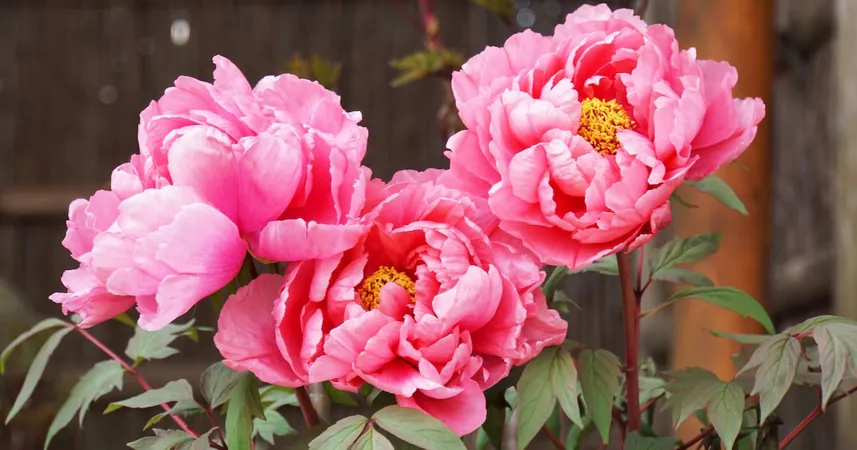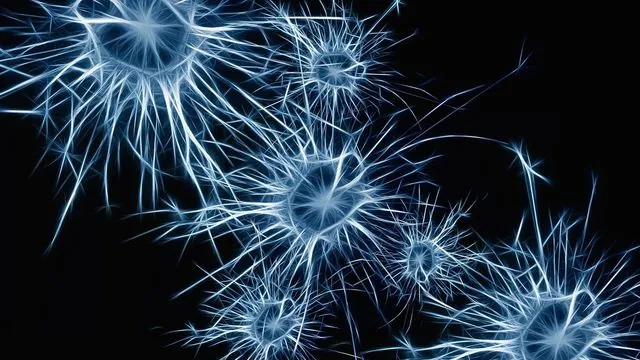
Revolutionary Tree Peony Extract: A Game-Changer in Skin Protection Against UV Damage!
2025-04-09
Author: Ming
Recent groundbreaking research from Peking University, in collaboration with MCL Skincare and Hangzhou Shiguang Xinya Biotechnology, has unveiled the remarkable potential of peony callus extract (PCE) in the fight against UVB-induced skin damage. The study explores how this innovative extract not only soothes skin inflammation but also aids in DNA repair and minimizes signs of aging.
The Science Behind PCE
The research team delved into the mechanisms through which PCE exerts its protective effects. UVB radiation is notorious for accelerating skin aging by triggering inflammation in skin cells, leading to redness, swelling, and discomfort. Laboratory tests on HaCaT cells—human epidermal keratinocytes revealed that UVB exposure led to a spike in pro-inflammatory markers. However, when treated with PCE at concentrations of 0.5% and 1%, there was a significant reduction in these markers, indicating that PCE could effectively calm post-exposure skin irritation.
Moreover, the study identified that PCE could reduce the release of histamine from mast cells by up to 74% even at a low concentration of 0.1%. This finding points to the extract's dual ability to alleviate irritation and diminish allergic reactions.
Healing DNA and Slowing Aging
One of the most striking findings of this study concerns the extract's role in repairing DNA damage, a significant consequence of UVB exposure. Utilizing comet assays, researchers observed that UVB irradiation vastly increased DNA damage indicators. Remarkably, treatment with just 0.1% PCE resulted in shorter DNA "comet tails," signifying reduced damage.
Additionally, the study noted that PCE effectively suppressed matrix metalloproteinases (MMPs)—enzymes that degrade collagen—thereby providing an essential defense against wrinkle formation and loss of skin resilience. With age, increased levels of β-galactosidase—a marker of cellular aging—can indicate rapid cell senescence. Once again, PCE demonstrated its anti-aging prowess by significantly reducing these levels in treated cells.
Real-world Applications: Boosting Collagen
To validate the laboratory findings, researchers conducted a real-world trial involving 13 healthy volunteers who used a cosmetic product containing 1% PCE. Over a span of 28 days, the study monitored collagen levels in participants' skin using Raman confocal spectroscopy. The results were staggering: while the placebo group showed minimal collagen increases, those using the PCE formulation experienced enhancements of up to 9.35% in collagen levels by the end of the study.
Sustainability Meets Safety
A particularly exciting aspect of this research is the sustainability of producing PCE from peony callus tissue. Unlike traditional plant extraction methods, which deplete natural resources, the callus culture technique allows for an ongoing and responsible production of peony extract.
In addition to its environmental benefits, PCE has established a strong safety profile; even at concentrations of up to 1%, it displayed no cytotoxic effects on skin cells, indicating its viability for long-term use in skincare products.
The Future of Skincare is Bright
This study signals an exciting advancement in skincare solutions aimed at combating UVB-induced damage. With promising results showing that PCE can significantly reduce inflammation, repair cellular DNA, and stimulate collagen production, it offers a compelling choice for cosmetics manufacturers seeking safe and sustainable ingredients.
The researchers enthusiastically noted that PCE could enhance skin health by reducing inflammation and bolstering the skin's defenses against aging factors. The growing demand for natural and effective skincare solutions makes this discovery not just a breakthrough but a beacon of hope for those looking to maintain youthful and resilient skin.
Stay tuned for more revelations in skincare science! This could be the ingredient that revolutionizes your skincare routine.




 Brasil (PT)
Brasil (PT)
 Canada (EN)
Canada (EN)
 Chile (ES)
Chile (ES)
 Česko (CS)
Česko (CS)
 대한민국 (KO)
대한민국 (KO)
 España (ES)
España (ES)
 France (FR)
France (FR)
 Hong Kong (EN)
Hong Kong (EN)
 Italia (IT)
Italia (IT)
 日本 (JA)
日本 (JA)
 Magyarország (HU)
Magyarország (HU)
 Norge (NO)
Norge (NO)
 Polska (PL)
Polska (PL)
 Schweiz (DE)
Schweiz (DE)
 Singapore (EN)
Singapore (EN)
 Sverige (SV)
Sverige (SV)
 Suomi (FI)
Suomi (FI)
 Türkiye (TR)
Türkiye (TR)
 الإمارات العربية المتحدة (AR)
الإمارات العربية المتحدة (AR)